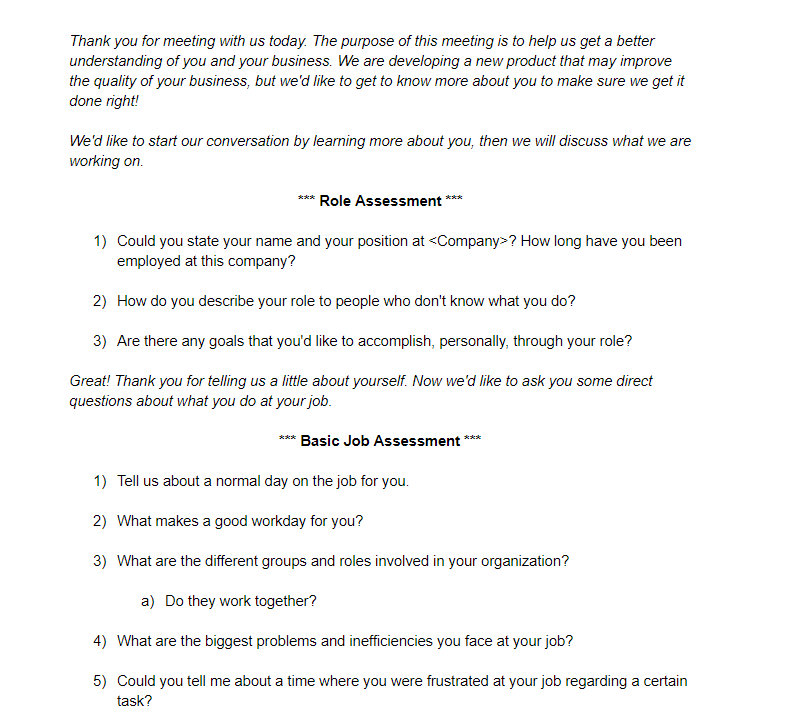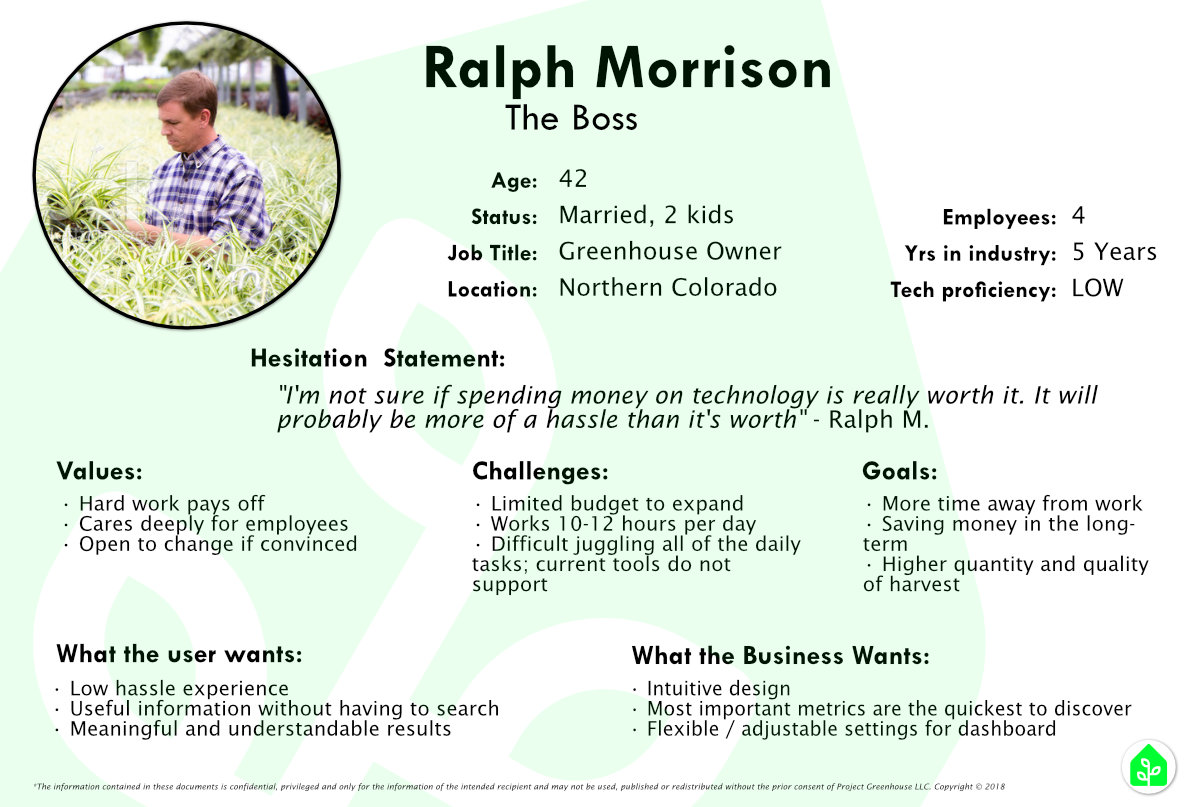
Project Greenhouse
Creating affordable "Smart-Home" solutions for agricultural operations
Project Greenhouse provides automated metric measuring and data recording, which enables agricultural operations to maximize their resource efficiency and experiment on future crops.
Overview
Project "Greenhouse" is a digital monitoring system for greenhouse environments. Metrics, such as temperature, pH level and water level, are captured by sensors and transmitted to an online storage system. The real-time metrics can be accessed through computers and mobile devices to help agriculturalists monitor remotely, saving time and labor resources.
My Role: Lead UX Researcher
As the lead UX researcher, my job was to uncover the needs of the stakeholders and shape the direction of an idea to a marketable product. I worked closely with the product owner and investors to define our business objectives. Communicating with greenhouse owners, I was able to define a series of user requirements to fulfill their needs.
Project Goals:
- Create a product that uses "smart-home" concepts in an agricultural setting
- Develop a software service and hardware product
- Create a product on a limited budget
- Produce a minimum viable product (MVP) to client testing
What problem does this solve?
Accessing to real-time metrics empowers business leaders to make informed decisions about labor and resource allocation.
Why is this project worth doing?
New agricultural markets are emerging across the nation, especially in the organic foods sector. Most agriculturalists do not have access to automated monitoring for real-time metrics and have to check manually and infrequently. Our product empowers leaders to make rapid decisions about their harvest.
Is this better than the alternative?
Competitors are marketed to large scale operations and do not have the robust business model to support small-to-medium sized operations. Our service looks to provide an affordable solution for small-to-medium sized operations.
Discovering the User
When the project was first designed, it was a product that offered a service, but did not have an ideal user base in mind.
User interviews with several agriculturalists running greenhouse operations in multiple states, we discovered that our initial design was not a good fit for our targeted audience. Our product was complex and powerful, but our demographic didn't have the same grasp of software and statistics to allow an informed business decision. Our users wanted something they could look at briefly and inform what action needs to be taken.
Sample Greenhouse Questionnaire

Personas and user profiles were built based on our meetings with greenhouse employees at all levels. We found three primary archetypes of users that would be using our product: the Boss, the Analyst, and the Worker.
Field studies uncovered that users spent more time trying to distinguish problematic plants and diagnosing what went wrong. The user would have to spend time testing the pH level, checking the water level, examining for mold or bugs, and taking time to correct the issues.
After visiting several greenhouses, our team went back to the drawing board to take what we learned and apply changes to make our software more valuable.
Reinventing the Product
After our visits at the greenhouses, our team needed to generate a revised list of product requirements, both for our project team and what features our potential clients need.
Our list of product features needed to be refined; a large number of initial release requirements, such as statistical analysis, were moved to a future release. Our list narrowed from 9 release requirements to 4.
Requirements and Specifications
Business Requirements:
- Affordable prototype and MVP
- Ability to scale with features
- Sellable product to our intended market
Release Features:
- Real-time data monitoring
- Push alerts to warn of data that falls out of range
- Out-of-the-box functionality (no assembly required)
- Mobile and Desktop accessibility
Future Features:
- Statistical analysis for own ecosystem
- Statistical analysis for cross-ecosystems for all clients
- Consultation feature for strategy and future planning
- Automation for adjusting light levels, pH, so-on
- AI pattern analysis for suggested optimal growing actions
Once we had our new list of business requirements, our team went back to our potential clients and performed a survey confirming which requirements are most valuable to them - an affordable and easy-to-use product that provides real-time measurement.
Competitive Analysis
Understanding the business model of our competitors gave us the opportunity to improve our own business model. Our lead competitor sells itemized modules for each sensor, along with services to access the sensor data.
Our initial plan was to sell our sensor package accompanied with our full software service for a one-time cost. Project Greenhouse learned from the competitors that the subscription model of data analytics as a service should be leveraged.
The Next Steps
Since our team has been able to take a strategic approach to discovering our user's needs, we had an easier time bringing our idea to a tangible product. We have changed our process of how we evaluate new features in order to get a product completed in a reasonable time.
My research gave a succinct problem statement to the designers and product owner, which makes it easier to create a good solution. The team is focused on reaching the goal of an MVP, and less concerned about including all of the desired features that were wanted upon initial release.
